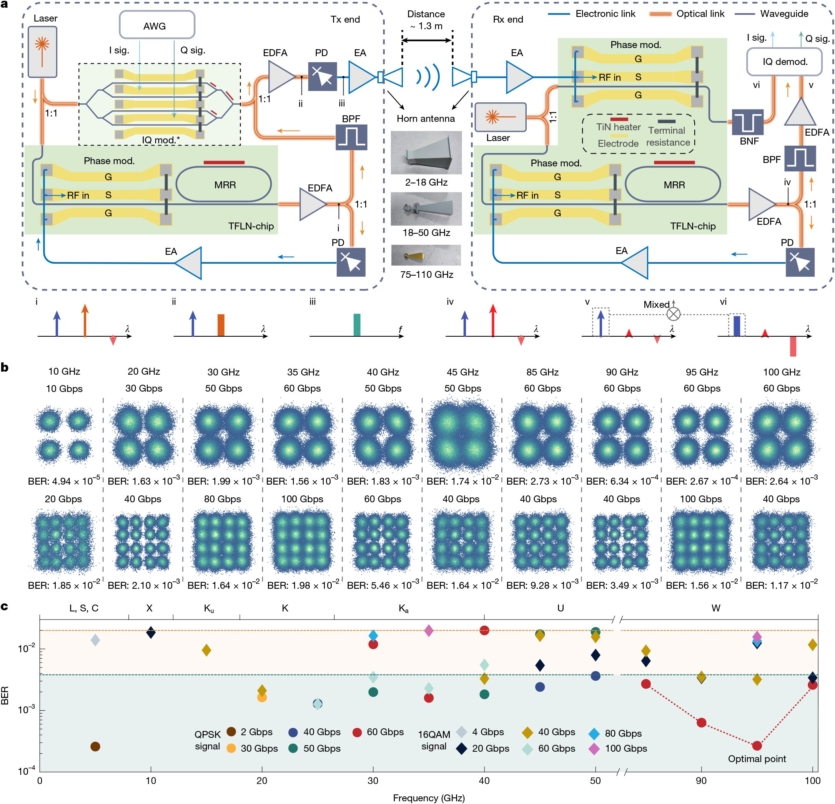
Chinese scientists from Peking University and the City University of Hong Kong presented the world’s first 6G multi-frequency chip.
This chip is capable of supporting mobile internet speeds of more than 100 Gbps, providing ultra-fast connections, low latency, and integration with artificial intelligence systems, that will manage and optimize networks in real time. For this purpose, the networks 6G should operate in a wide frequency range from standard microwaves to waves with a frequency of several THz. Current 5G technology uses a limited set of radio frequencies similar to those used by previous generations of wireless technologies.
The size of the new chip is 11×1.7 mm. It operates in the frequency range from 0.5 to 115 GHz. Usually, at least 9 separate radio systems are needed to cover this range.
“Our proposed system is a significant step towards future full-spectrum and universal wireless networks. This provides reconfigurable full-channel wireless communication with improved bandwidth, data rate, and system functionality compared to previous photonics-based wireless communication demonstrators”, — the chinese developers note.

One of the innovative solutions of the Chinese scientists was to place all the key components of the wireless system on a single tiny lithium niobate chip in the form of a nanofilm. The chip also uses an innovative method of signal generation and transmission.
First, a broadband electro-optical modulator converts wireless signals into optical signals. These signals then pass through a optoelectronic oscillators to generate the necessary radio frequencies. These generators use light and electricity to create stable and clean signals in the range from microwaves to terahertz waves. During the tests, the system achieved frequency tuning up to 6 GHz in 180 microseconds.
While the development of a single chip, that works on all frequencies is a significant breakthrough, the technology is still in its early stages of development. Many experts expect that commercial 6G networks will begin to roll out around 2030.
Before that, a lot of work needs to be done to create the necessary infrastructure and compatible devices. However, the advent of superfast connectivity will pave the way for a new wave of services and innovations that could dramatically change the way we use the Internet, power smart cities, and, according to some scientists, virtually every aspect of our lives.
The results of the study are published in the journal Nature
Source: TechXplore

Spelling error report
The following text will be sent to our editors: